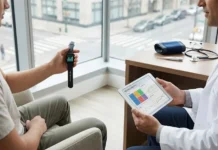The widespread use of telemedicine as a result of the Covid-19 pandemic could be deepening the problems people with disabilities face when accessing healthcare.
This is the conclusion of a new report funded by the US Agency for Healthcare Research and Quality and the National Institutes of Health. The research, published in the Journal of the American Medical Informatics Association (JAMIA), states that while for some members of the disabled community, the option to engage with telehealth has improved access to care, for others poor design, implementation and policy has made it worse.
Reasons for this include the design of many telehealth platforms, for example video calling which people with communication-related disabilities such as deafness, blindness and speech disabilities struggle to use. Online patient portals present similar problems.
There are also implementation concerns, as the authors found that the disability community “experiences less access to broadband services, and less ownership and use of hardware through which telehealth may be accessed.”
To combat this, software developers must redesign telehealth technologies, both web and app-based, to make sure they’re responsive and accessible to people with disabilities.
Assistance to learn how to use new forms of technology should be provided. There should also be qualified sign language interpreters, speech to speech translators, and readers to help improve access.
Closed-captioning, alt text, audio description, and large text options must also be provided. If these factors are taken into account people with disabilities will be able to fully engage with a broad range of telehealth services, the report says.
Additionally, telehealth can be beneficial compared to traditional clinical visits for people with disabilities, due to barriers such as inaccessible medical equipment, waiting rooms, and bathrooms.


















